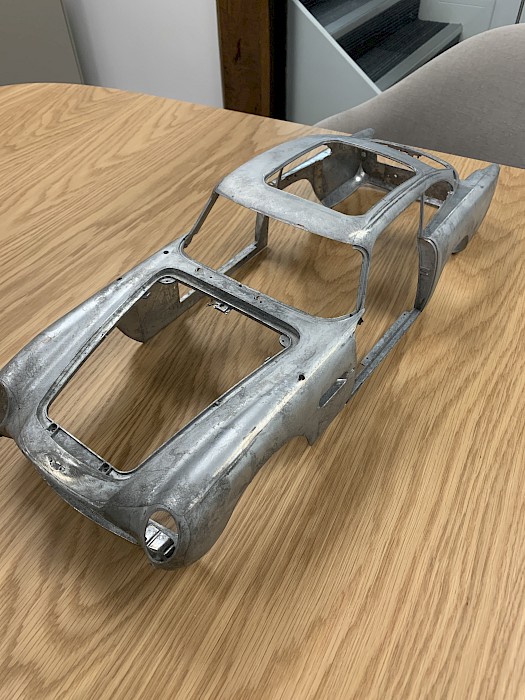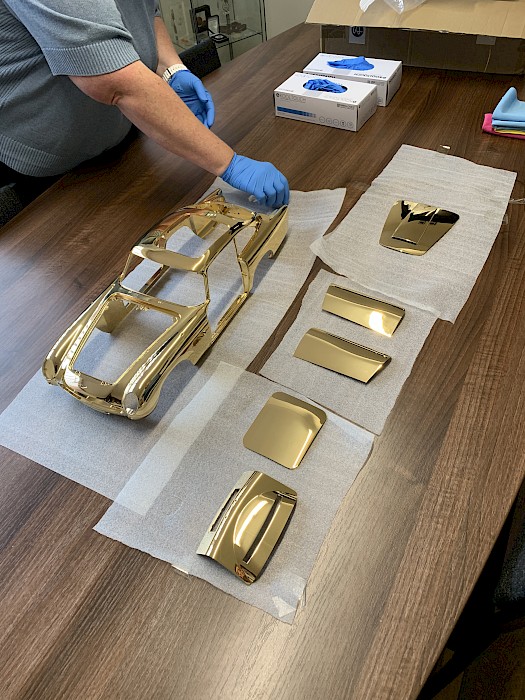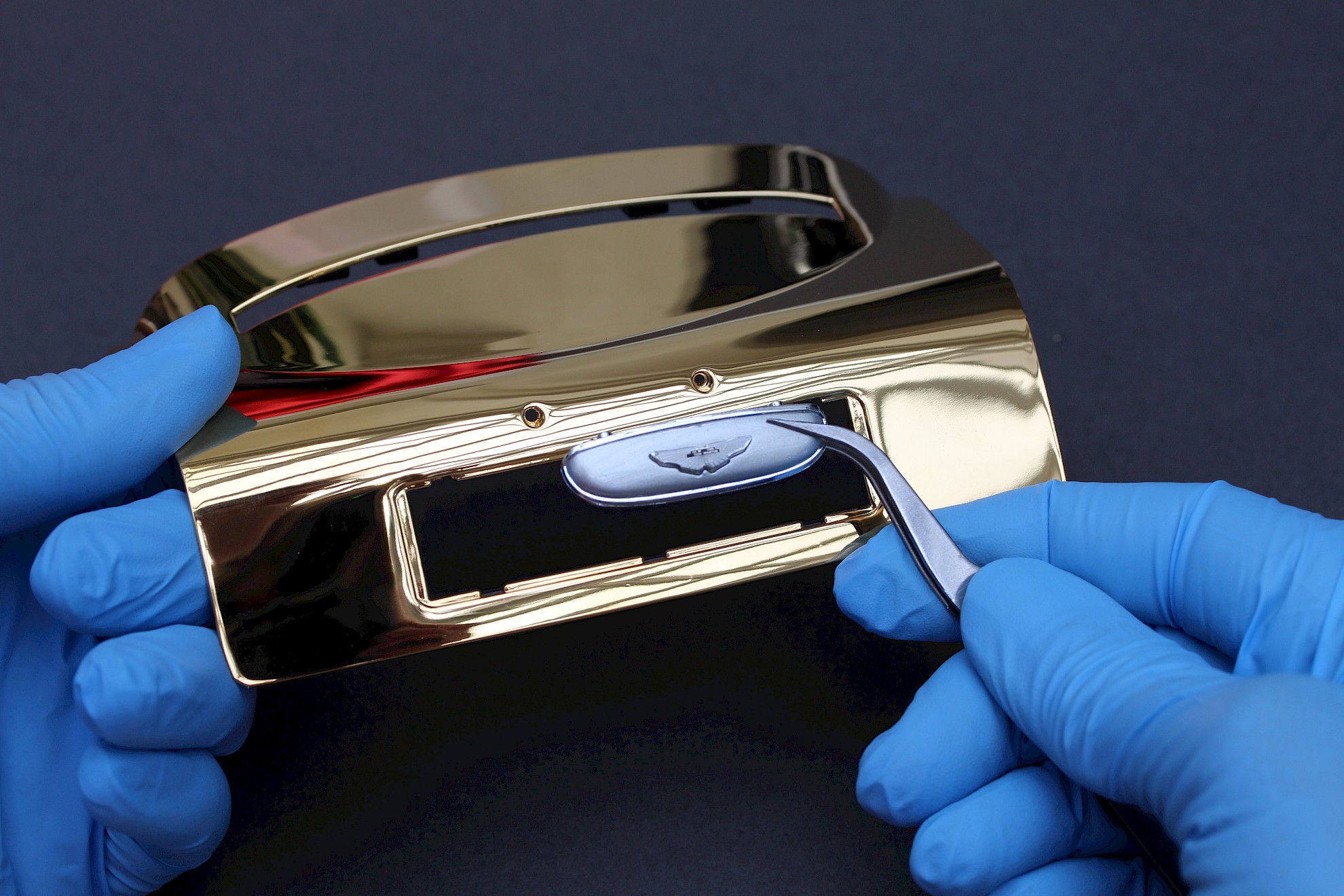The making of a gold DB5
To celebrate the 60th anniversary of Goldfinger, we wanted to create something extra special. At Agora Models we're pretty expert in producing model cars and the movie of course is all about gold, so putting the two together to create a 24 carat gold car was not too much stretch of the imagination!
From the outset we chose to make only seven of these kits so as to retain the exclusivity and rarity - probably the most exclusive model kit in the world! Keeping the quantity to only seven also enables us to keep the process of gold-plating to individual craftsmen - no mass-production here!
Even if the idea of gold-plating a model is simple, the actual process to do it is far from simple! We have completed several stages of development including plating several bonnets and one complete prototype. Before we make the final seven, we will also test two 'art samples' which is somewhere between the prototype and final item (These two art samples will be retained by EON Productions in their vaults!)
It is worth pointing out, because it is not obvious looking at the finished model, that all the parts are totally gold-plated all-over. That is, both the inside and outside faces of the bodywork reveal this amazing finish.
We leave it up to each modeller to decide how much of the gold to cover with the internal trim components!
Constructing the Driver-side Door
At Agora Models we try to replicate the build of the 'real' car as much as possible, and you can see here some images of the construction of the driver's side door, which show that even parts of the car that you eventually won't see are still gold plated. The gallery below shows the window being attached to the inside face of the door panel. At this point the whole of the door panel can be seen to be plated in gold.
After construction of the interior door panel, the final parts of the door trim are attached. The particular grey colour used in the Goldfinger DB5 is 'Elephant Grey'.
Note the extra compartment in the door which will be used to hold Bond's secret telephone. In 1964, having a phone in your car was the preserve of top secret agents!
On the outside, the door handle and window trim retain their chrome finish, contrasting beautifully with the gold and accentuating the meticulous details.
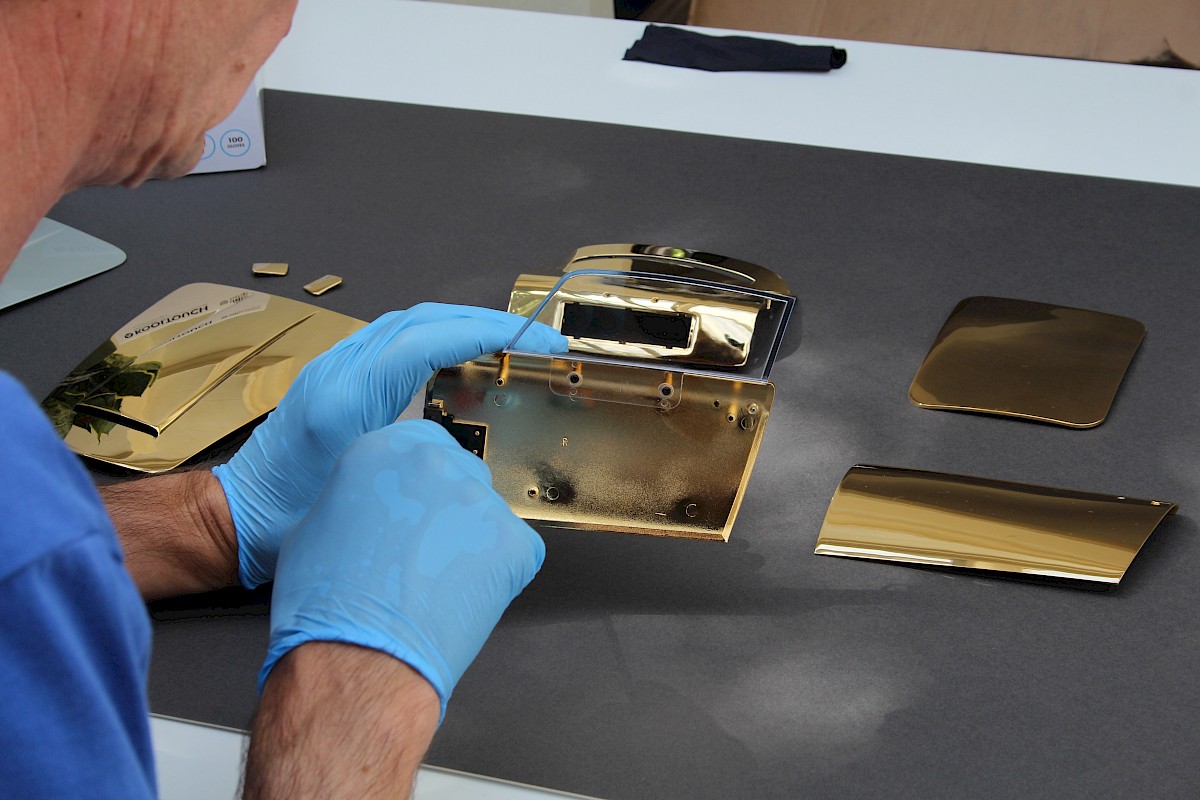
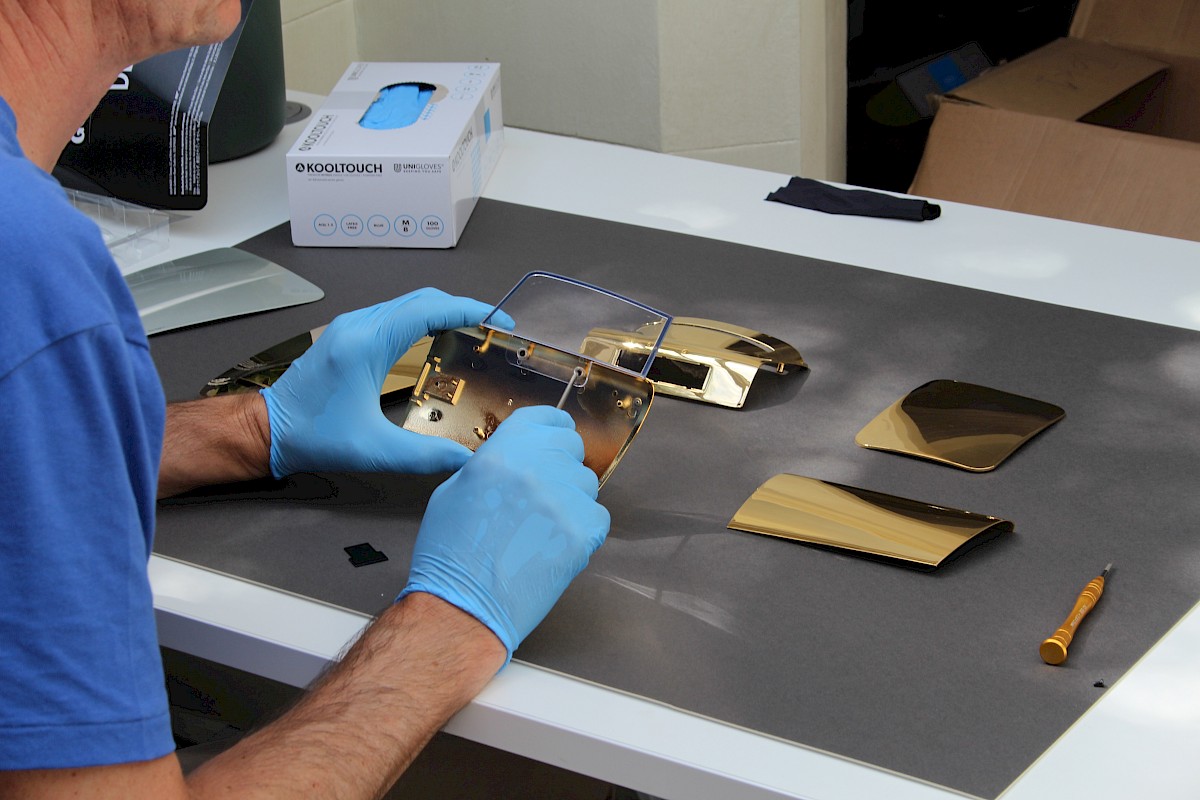
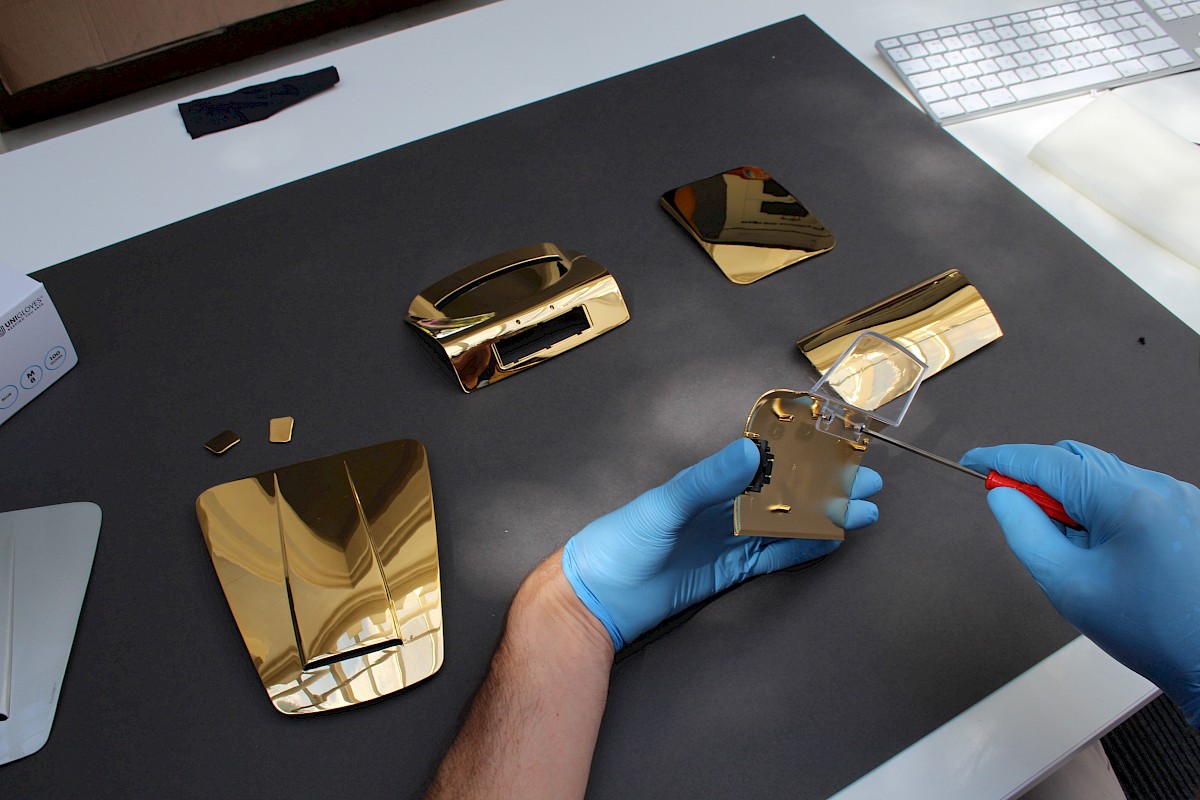
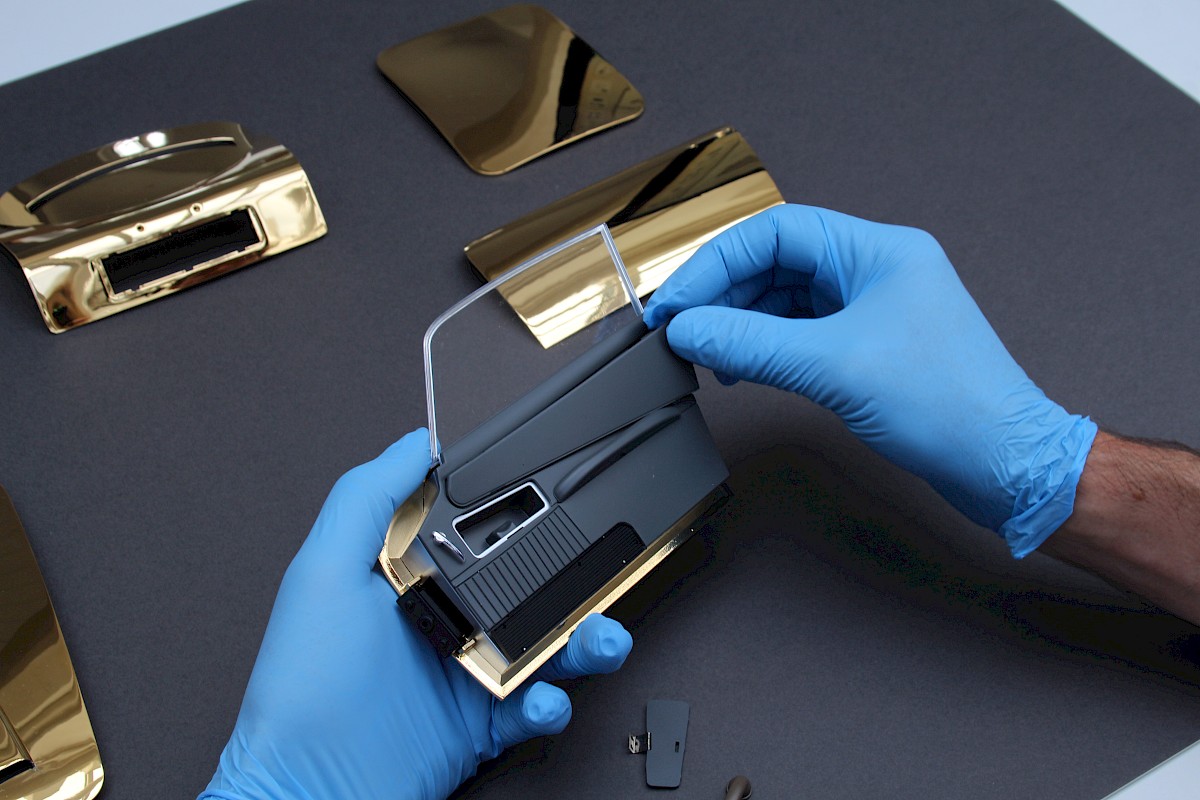
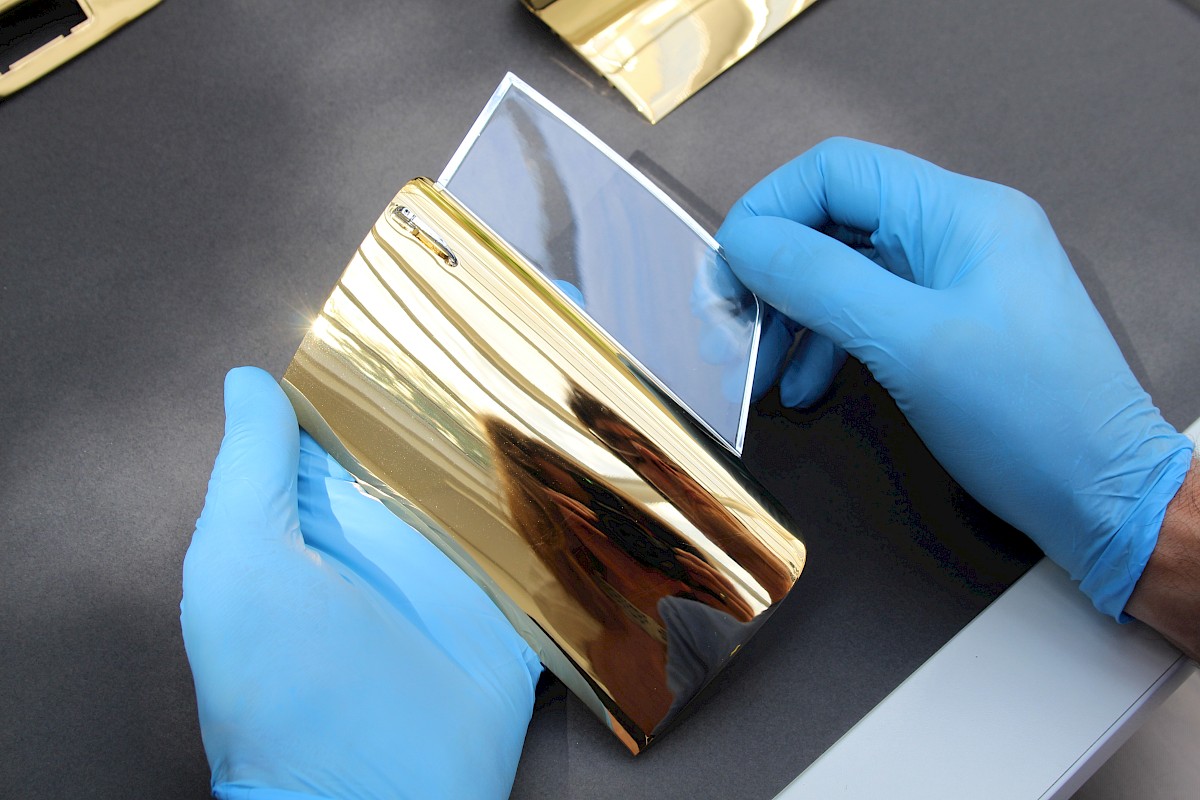
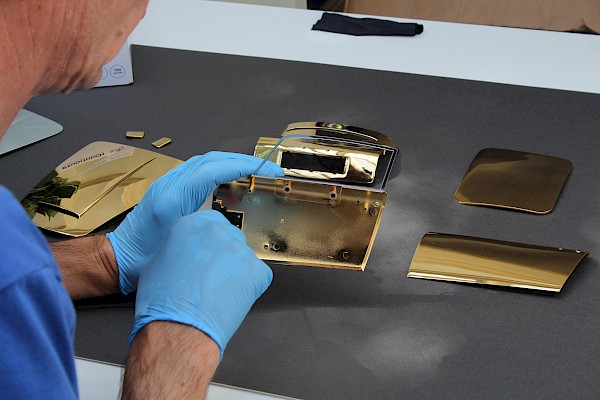
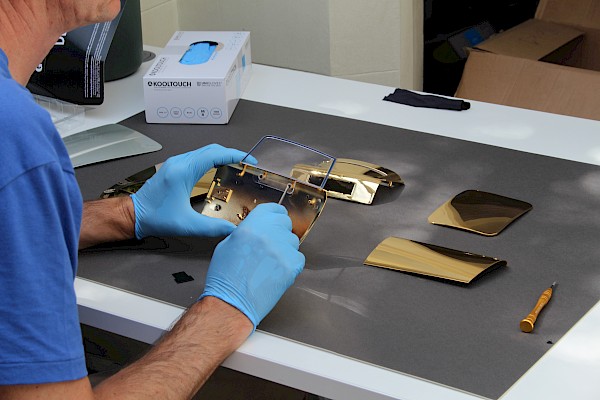
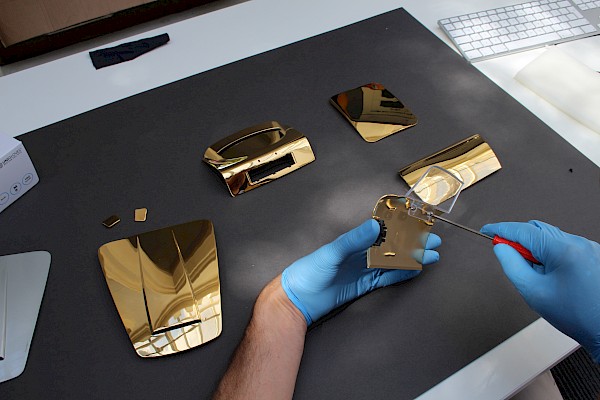

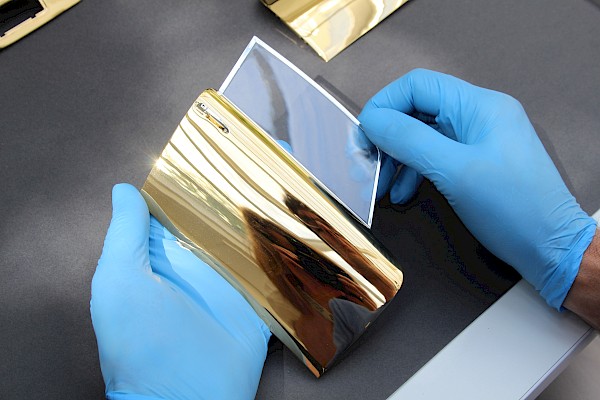
Why Blue Gloves?
You may have been expecting to see me wear a pair of white cotton gloves for the photos. When handling gold with such a shiny reflective surface, it is easy for oils from our hands to transfer to the surface, causing blemishes that will then need to be polished off. The answer, whilst constructing the model, is to wear a pair of rubber surgical gloves. Unlike traditional white cotton gloves, the surgical gloves create a complete barrier against oils - and they also need to be powder-free!
Some of our publicity photos do indeed show me wearing a pair of white cotton gloves, but rest-assured, below those more photogenic gloves are a pair of the trusty blue powder-frees – just to be safe!

